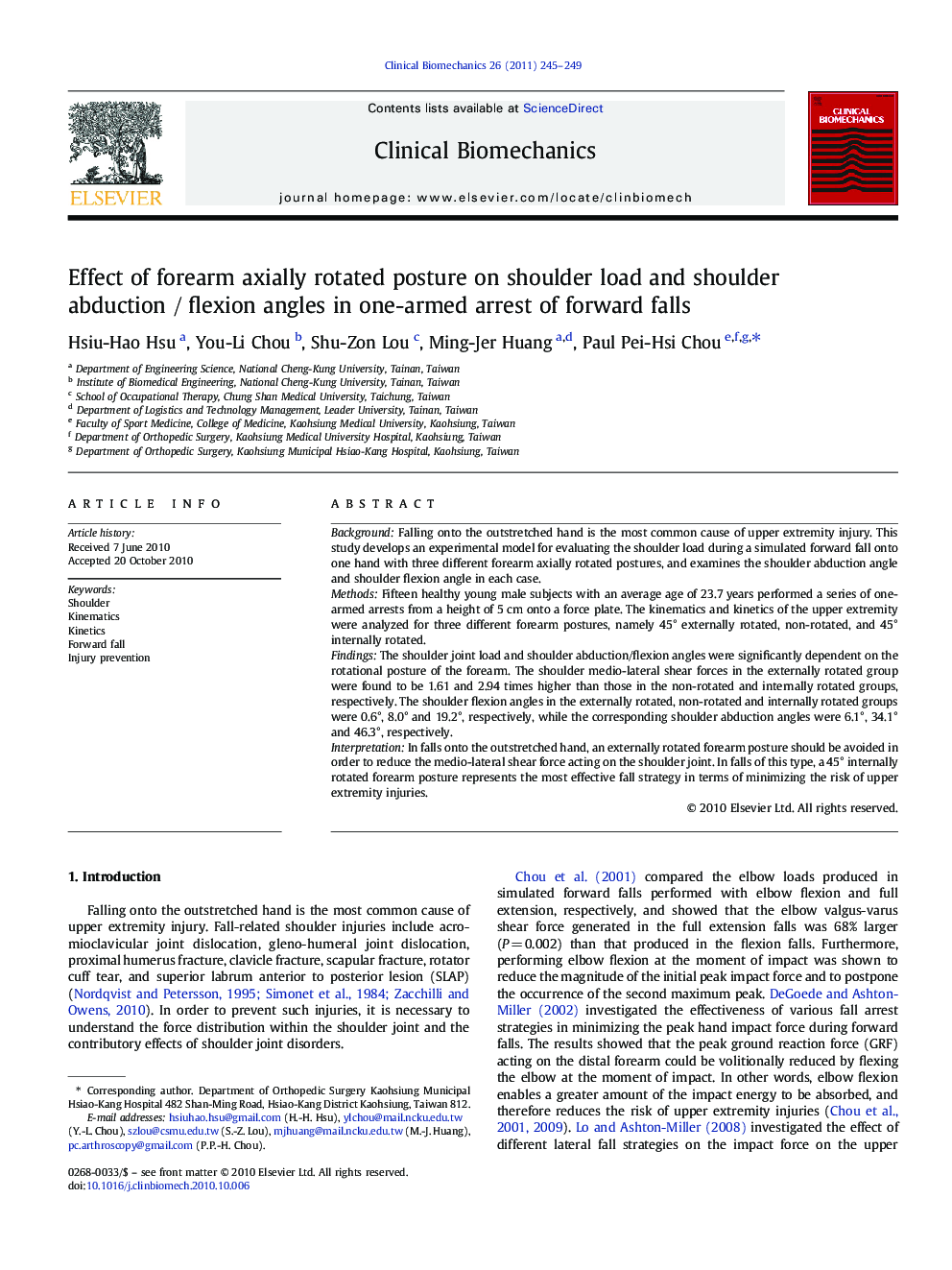| Article ID | Journal | Published Year | Pages | File Type |
|---|---|---|---|---|
| 4050918 | Clinical Biomechanics | 2011 | 5 Pages |
BackgroundFalling onto the outstretched hand is the most common cause of upper extremity injury. This study develops an experimental model for evaluating the shoulder load during a simulated forward fall onto one hand with three different forearm axially rotated postures, and examines the shoulder abduction angle and shoulder flexion angle in each case.MethodsFifteen healthy young male subjects with an average age of 23.7 years performed a series of one-armed arrests from a height of 5 cm onto a force plate. The kinematics and kinetics of the upper extremity were analyzed for three different forearm postures, namely 45° externally rotated, non-rotated, and 45° internally rotated.FindingsThe shoulder joint load and shoulder abduction/flexion angles were significantly dependent on the rotational posture of the forearm. The shoulder medio-lateral shear forces in the externally rotated group were found to be 1.61 and 2.94 times higher than those in the non-rotated and internally rotated groups, respectively. The shoulder flexion angles in the externally rotated, non-rotated and internally rotated groups were 0.6°, 8.0° and 19.2°, respectively, while the corresponding shoulder abduction angles were 6.1°, 34.1° and 46.3°, respectively.InterpretationIn falls onto the outstretched hand, an externally rotated forearm posture should be avoided in order to reduce the medio-lateral shear force acting on the shoulder joint. In falls of this type, a 45° internally rotated forearm posture represents the most effective fall strategy in terms of minimizing the risk of upper extremity injuries.
